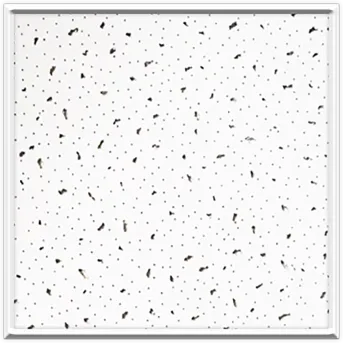- Afrikaans
- Albanian
- Amharic
- Arabic
- Armenian
- Azerbaijani
- Basque
- Belarusian
- Bengali
- Bosnian
- Bulgarian
- Catalan
- Cebuano
- Corsican
- Croatian
- Czech
- Danish
- Dutch
- English
- Esperanto
- Estonian
- French
- German
- Greek
- Hindi
- Indonesian
- irish
- Italian
- Japanese
- Korean
- Lao
- Malay
- Myanmar
- Norwegian
- Norwegian
- Polish
- Portuguese
- Romanian
- Russian
- Serbian
- Spanish
- Swedish
- Thai
- Turkish
- Ukrainian
- Uzbek
- Vietnamese
Th8 . 11, 2024 22:52 Back to list
Understanding the Benefits and Applications of Mineral Fiber Acoustic Ceiling Systems in Modern Interiors
Exploring Mineral Fiber Acoustic Ceilings Benefits and Applications
In the realm of modern architecture and interior design, acoustic performance is a crucial aspect that often dictates the success of a space. One material that has gained significant popularity for this purpose is mineral fiber acoustic ceiling tiles. These ceilings not only enhance the acoustics of a room but also contribute aesthetically, making them a preferred choice in various applications ranging from commercial buildings to residential homes.
What are Mineral Fiber Acoustic Ceilings?
Mineral fiber acoustic ceilings are specialized ceiling tiles composed primarily of natural minerals and fibers, such as wood, gypsum, and other materials. These tiles are engineered to absorb sound, making them particularly effective in space where noise reduction is a priority. The porous structure of mineral fiber allows sound waves to penetrate the surface, reducing reverberation and echo. This characteristic is vital in environments like offices, schools, restaurants, and theaters, where clear communication and a pleasant auditory experience are essential.
Benefits of Mineral Fiber Acoustic Ceilings
1. Sound Absorption The primary benefit of mineral fiber acoustic ceilings is their exceptional sound-absorbing qualities. They can significantly lower noise levels, improve speech intelligibility, and create a comfortable auditory environment, thereby enhancing productivity and overall experience within a space.
2. Aesthetic Versatility Available in a variety of textures, colors, and finishes, mineral fiber acoustic ceilings can complement any design style, from traditional to modern. They can be seamlessly integrated into the overall decor, allowing designers to maintain the desired aesthetic while also achieving functional benefits.
3. Fire Resistance Mineral fiber materials are inherently resistant to fire, which adds an extra layer of safety in building design. This property helps meet building codes and regulations, offering peace of mind to architects, builders, and occupants alike.
4. Moisture and Mold Resistance Many mineral fiber acoustic ceiling products are treated to resist moisture and mold growth, making them suitable for areas like bathrooms and kitchens where humidity levels can be high. This feature contributes to healthier indoor air quality and reduces the risk of structural damage.
mineral fiber acoustic ceiling

5. Sustainability With growing concerns about environmental impact, many manufacturers offer mineral fiber products made from recycled materials. This sustainable approach not only minimizes waste but also supports green building initiatives, appealing to environmentally conscious consumers.
Applications in Various Settings
The versatility of mineral fiber acoustic ceilings makes them ideal for a wide range of applications
- Commercial Spaces In offices and conference rooms, these ceilings enhance speech clarity and reduce distractions, creating an environment conducive to productivity and collaboration.
- Educational Institutions Schools and universities benefit from improved acoustics in classrooms and lecture halls, where effective communication is vital for learning.
- Healthcare Facilities Hospitals and clinics utilize mineral fiber ceilings to create quieter, more serene environments for patients, contributing to their overall comfort and recovery.
- Hospitality Venues Restaurants and hotels employ these ceilings to manage noise levels, enhancing the dining experience and promoting relaxation.
In conclusion, mineral fiber acoustic ceilings offer a perfect blend of functionality and design. With their impressive sound absorption properties, aesthetic flexibility, and additional safety features, these ceilings are an excellent choice for a variety of settings. As the demand for effective acoustic solutions continues to rise, mineral fiber acoustic ceilings will undoubtedly play a significant role in shaping the future of interior spaces.
-
Transform Interiors with PVC Gypsum Ceiling: A Stylish, Durable, and Moisture-Resistant SolutionNewsMay.19,2025
-
The Smart Interior Upgrade: Discover the Durability and Versatility of Gypsum Ceiling Access Panel SolutionsNewsMay.19,2025
-
The Smart Choice for Interior Design: Discover the Value of PVC Gypsum Ceiling SolutionsNewsMay.19,2025
-
Mineral Fiber Ceiling Tiles: The Smart Blend of Performance and AestheticsNewsMay.19,2025
-
Mineral Fiber Ceiling Tiles: The Superior Choice Over Gypsum for Sound and Fire SafetyNewsMay.19,2025
-
Mineral Fiber Ceiling Tiles: Eco-Friendly Strength and Style for Every CeilingNewsMay.19,2025







